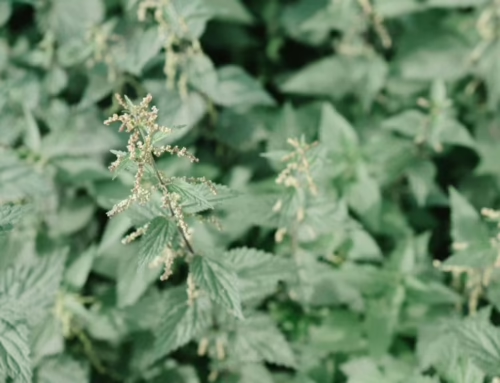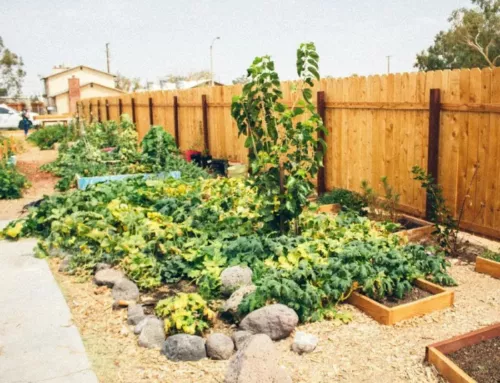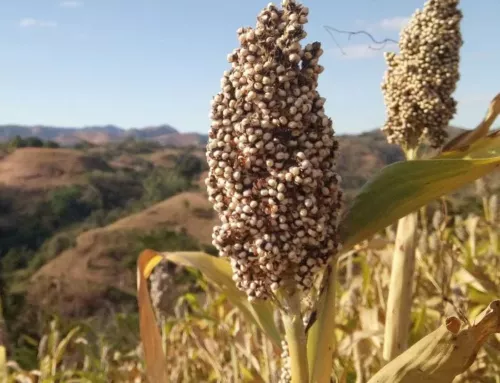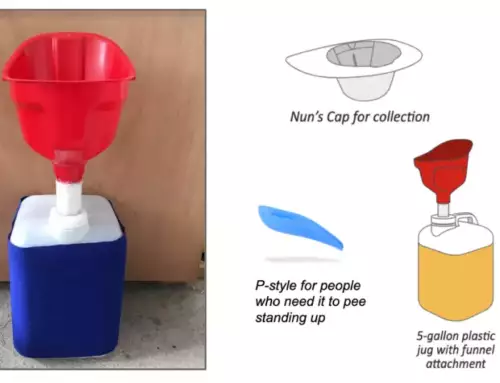By Christine R. Nelson, NOFA/Mass Intern
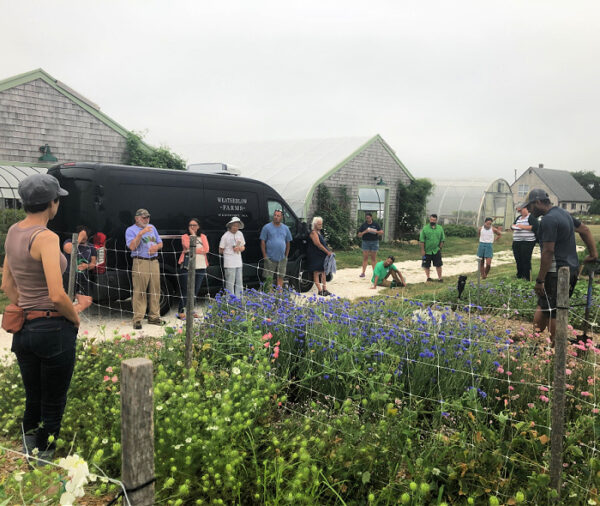
SEMAP’s July 2022 event at Weatherlow Farms. Photo credit Christine R. Nelson.
Growers interested in learning more about soil health converged at the beautiful Weatherlow Farms in Westport, Massachusetts on July 21, 2022 for an educational event organized by Southeastern Massachusetts Agricultural Partnership (SEMAP). NOFA/Mass soil experts were on hand to talk about soil health.
To see Weatherlow Farms’ cut-flower beds is a treat. The flowers are lush and healthy. Flowers are planted densely, with strategic intercropping. Phoebe Poole manages the acre and a half of cut flower beds with practices that support soil health. The farm is 7 years old; initially the farm managers pursued conventional, chemical practices. In the last 3 years, they have been changing practices to encourage better soil biology, with improved results and less expensive inputs. Ruben Parrilla, a Soil Technician from NOFA/Mass gave the workshop presentation. Highlights from the talk included:
Why Do We Want Biological Soil?
Ruben: Soil should be more than its mineral components of sand, silt and clay. Healthy and diverse populations of micro- and macro-organisms provide many benefits to the soil. They improve soil structure, fertility, and offer disease prevention. Soil can hold onto water longer in times of drought and soak up large volumes of water faster. You can actively build soil instead of losing soil to erosion. Biological soil also sequesters more carbon. For a grower, biological soil means better growing success, with less expensive inputs such as fertilizers and pesticides.
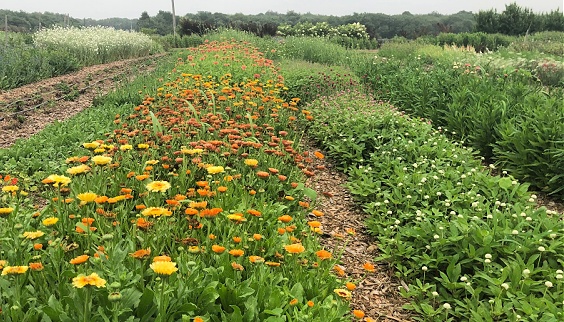
Some of Weatherlow Farms’ cut flower beds. Photo credit: Christine R. Nelson
What Does the Color of Soil Tell Us?
Ruben: Weatherlow Farms’ native soil is very sandy. You would expect to see a light-colored soil. Instead, here we see soil that is dark brown in color; it holds together well and it doesn’t look like sand. That is due to the organic matter (plant material) that has been added over time and the work of biology in the soil. The biology has created a product that is darker in color and is more than just minerals.
How does a grower know when there is good biology in the soil?
Ruben: Putting a soil sample under a microscope is the best way to tell if your soil has strong biology. But there are other easy tests you can do as a grower to give you an idea of the biology in your soil.

A soil aggregate from Weatherlow Farms. Photo credit: Christine R. Nelson.
Consider the Slake Test to determine soil aggregation and soil structure. Fill a jar with water and suspend a piece of wire mesh (such as hardware cloth) within the top of the jar. Choose a soil clod from topsoil and put it in the jar on top of the mesh (the soil should touch the water). The soil pores will soak up the water. If there is good biology in the soil, the sticky exudates from the microorganisms will keep the soil sample intact. You will not see the soil dispersing in the water. This is good soil structure. Soil with poor biology will fall apart and disperse in the water. This is poor soil structure. Consider comparing soils from different growing areas with different management practices. This is an easy test and something every grower can do.
I recommend doing a water infiltration test as well. Simply cut a piece of a drain (about 6” in diameter), a few inches high. Place on the soil. Simulate an inch of rain over the drain (this is 447 ml in a 6” ring.) The water should infiltrate into the soil within one minute. Here at Weatherlow Farms, it took just ten seconds for the water to infiltrate into their soil. That is a sign of good biology. Better infiltration indicates more pores and aggregates, more carbon, better soil health, and higher water holding capacity.
How do I know if my soil is compacted?
Ruben: I recommend using a penetrometer to determine where any compaction might be. The penetrometer is a measuring device; it is a rod with a pressure gauge on it. You apply steady pressure on the penetrometer. It measures the resistance in the soil. No plant roots can penetrate through soil that is 300 pounds per square inch or more. Here at Weatherlow Farms, I was able to push the penetrometer about a foot into the soil without any resistance, with no pressure at all. Their soil is extremely friable and fluffy. This is a result of good soil biology.
If your soil is compacted, there are a few techniques you can use to mitigate the compaction. A manual broadfork can be used. It will open up the soil and introduce oxygen to the soil. Oxygen is necessary for the beneficial aerobic microorganisms. Weatherlow Farms still uses a broadfork at the beginning of every season. For severe compaction and/or larger farms, a subsoiler can be used as well. With either approach, you can combine it with a compost tea application to introduce biology into the soil. Microorganisms will help with compaction.

John Duke, NOFA/Mass Board Member, found a friend at Weatherlow Farms. Photo credit: Christine R. Nelson.
Why should we not disturb the soil (such as tilling)?
Ruben: Imagine what happens to a human city when a tornado passes through. Everything is destroyed and the city needs to be rebuilt. The same thing happens in the soil when you till or disturb the soil. The microorganisms and soil structures are destroyed. The microorganisms have to start over and rebuild. Disturbance sets your soil back.
What is the best way to build soil organic matter quickly?
Ruben: Organic matter is the food for soil biology, so it is important growers add organic matter to the soil on a regular basis. The quickest way to increase soil organic matter is to grow diverse cover crops. They will send carbon exudates (organic matter) down into the soil as they are growing and their dead debris will add additional organic matter to the soil. There are other methods to add organic matter to soil, such as applying organic mulches and compost. But compost only adds about a 0.5% increase in organic matter per year.
To have Ruben come to your own farm or garden to complete a soil health analysis, contact [email protected] and [email protected]. More information on NOFA/Mass’s Soil Technical Services can be found at nofamass.org/nofa-mass-technical-assistance/
More information about Weatherlow Farms can be found at www.weatherlowfarms.com
About the Author
Christine R. Nelson is a Master’s Degree candidate at the University of Massachusetts, Amherst, pursuing a degree in Sustainability Science-Agriculture. As a NOFA/Mass intern, she loves sharing agricultural and climate solutions. She can be reached at [email protected].

